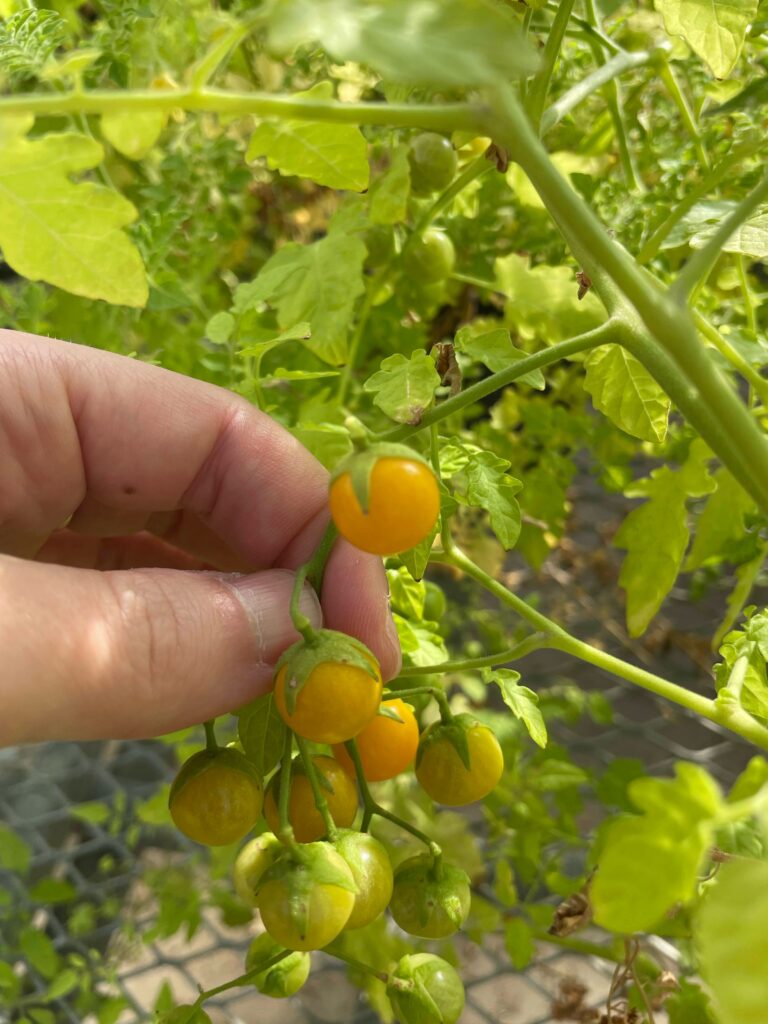A rare chemical reversion in Galápagos tomatoes is challenging how we think about bitterness, toxicity and crop resilience.
On the rocky western shores of the Galápagos Islands, wild tomatoes are doing something evolutionary theory once considered nearly impossible: they’re going backward. Scientists call it a rare case of “reverse evolution,” but what matters most to the future of agriculture is the chemistry behind the change—and what it could mean for breeders, seed companies, and farmers trying to build more resilient crops.

At the center of this breakthrough is Solanum cheesmaniae, a wild tomato species native to the archipelago. On newer islands formed by volcanic activity, this plant has developed a molecular profile that closely resembles its ancient ancestors. According to University of California-Riverside assistant professor of molecular biochemistry Adam Jozwiak, it’s not just an oddity, it’s a potential roadmap for strengthening tomato defenses in an era of mounting pest pressure and reduced pesticide use.
Unlocking Ancestral Chemistry
“Commercial tomato varieties could easily be screened for the presence of both stereoisomeric forms of steroidal glycoalkaloids using standard metabolite profiling techniques such as LC-MS,” Jozwiak explains. “That’s straightforward. However, detecting whether a variety is ‘primed’ to revert to ancestral chemistry is a different story.”
And that story is complicated. Tomatoes, like many crops in the Solanaceae family, produce steroidal glycoalkaloids (SGAs) — bitter-tasting, toxic compounds that protect the plant from insects, fungi and pathogens. In modern breeding, those compounds have been systematically reduced in ripe fruit to satisfy consumer preferences for sweeter, milder tomatoes.


“Tomato breeders have worked to reduce bitterness in cultivated varieties for decades,” Jozwiak says. “But by reducing these compounds for the sake of flavor, we may have unintentionally compromised the plant’s natural ‘immune system.’”
The Four-Amino-Acid Switch
That’s where the Galápagos tomatoes come in. On newer islands like Fernandina and Isabela, S. cheesmaniae plants produce alkaloids with a stereochemistry not seen in cultivated tomatoes for millions of years. These compounds resemble the bitter, bioactive chemicals found in eggplants, and they’re synthesized through an altered version of the GAME8 enzyme.
The kicker? It only takes four amino acid substitutions in that enzyme to flip the chemical signature from modern to ancestral.
“The fact that just four amino acid changes in the GAME8 enzyme can flip the stereochemistry of these compounds shows how precise and targeted this kind of trait manipulation could be,” Jozwiak says. “In theory, we could use CRISPR gene editing to introduce specific mutations that shift the chemical profiles.”
His team didn’t stop at tomatoes. They introduced the modified GAME8 gene into tobacco plants, which then produced the same ancestral alkaloids. It was a rare, clear demonstration that evolution doesn’t always move in one direction, and that reversing a major plant chemistry pathway is both possible and predictable.
A New Frontier for Crop Defense
That level of biochemical control opens the door for what Jozwiak calls “designer plant chemistry,” where breeders and biotech firms could tailor alkaloid profiles to balance pest resistance, flavor, safety, and shelf life.
“If the goal were to make plants more resistant to pests, then a logical approach would be to upregulate key biosynthetic enzymes, particularly GAME8, GAME6 and GAME15,” he says. “But do so in a tissue-specific or developmental-stage-specific way.”
For example, boosting SGAs in leaves and stems (the parts of the plant that aren’t consumed) could increase pest deterrence without compromising fruit quality. Alternatively, delaying the natural conversion of α-tomatine (a bitter, toxic compound) into its non-toxic form, esculeoside A, might allow for better protection during early fruit development while preserving taste at harvest.
“Another approach could involve fine-tuning the timing of alkaloid conversion during ripening, to maximize pest resistance early in fruit development while ensuring a palatable product at harvest,” Jozwiak explains.
Balancing Flavor and Function
But any strategy involving increased SGAs would need careful testing and regulatory scrutiny. These compounds, while natural, can be toxic to humans and animals at high doses. In modern tomatoes, they’re typically present in unripe fruit and vegetative tissue—but the ripe fruit contains little to none.
“Yes, I think targeted alkaloid manipulation has real potential to reduce pesticide use, but it would require a careful, science-based approach,” Jozwiak says. “Any commercial application would need to be precisely controlled and subjected to rigorous regulatory safety assessments, especially if the edible parts of the plant are affected.”
The opportunity goes beyond tomatoes. Other nightshade crops, like potatoes and eggplants, also use steroidal glycoalkaloids for defense. And they use the same family of enzymes — GAME8-like proteins — to build them.
“Because these compounds play important roles in plant defense, manipulating their biosynthesis could be useful for breeding more pest-resistant or disease-tolerant varieties,” he says. “However, efforts to reduce alkaloid content for safety or flavor often come with a trade-off—lower defense capacity. So, there’s a balance to be struck between taste, safety, and resilience.”
Environmental Hurdles and Genetic Drift
That balance could be achieved through gene editing or even marker-assisted breeding, using enzyme structure as a guide.
But there’s another challenge: ecology. In the Galápagos, Jozwiak’s team found the reversion trait to be stable across multiple populations, likely due to strong local selective pressure, whether from herbivores, microbes or climate. In commercial settings, those pressures might not exist.
“It’s unclear whether this trait would remain stable in other environments,” he says. “The expression and retention of these alkaloids could be influenced by many factors: the surrounding ecosystem, the presence or absence of certain pests, soil microbiota and climate conditions.”
Gene flow is another risk. In places like North America or Europe, where tomatoes are grown commercially alongside many varieties, pollination could spread or dilute the trait.
“There’s a chance of gene flow through pollination. This could dilute or disrupt the trait in subsequent generations unless strict breeding controls are maintained,” he explains.
Bitterness with a Purpose
Still, the potential is real. Breeding tomatoes that are better able to fend for themselves, without a chemical crutch, could help reduce reliance on synthetic pesticides, lower input costs and protect pollinators and soil health.
“Instead of eliminating SGAs altogether, we could explore strategic reintroduction or modulation,” Jozwiak says. “This could pave the way for a more nuanced, defense-aware approach to tomato breeding, where bitterness is not viewed solely as a defect but as a tool.”
As researchers continue to explore the precise effects of SGA stereochemistry on taste receptors, insect deterrence, and microbial interactions, the path forward may depend on looking back.
